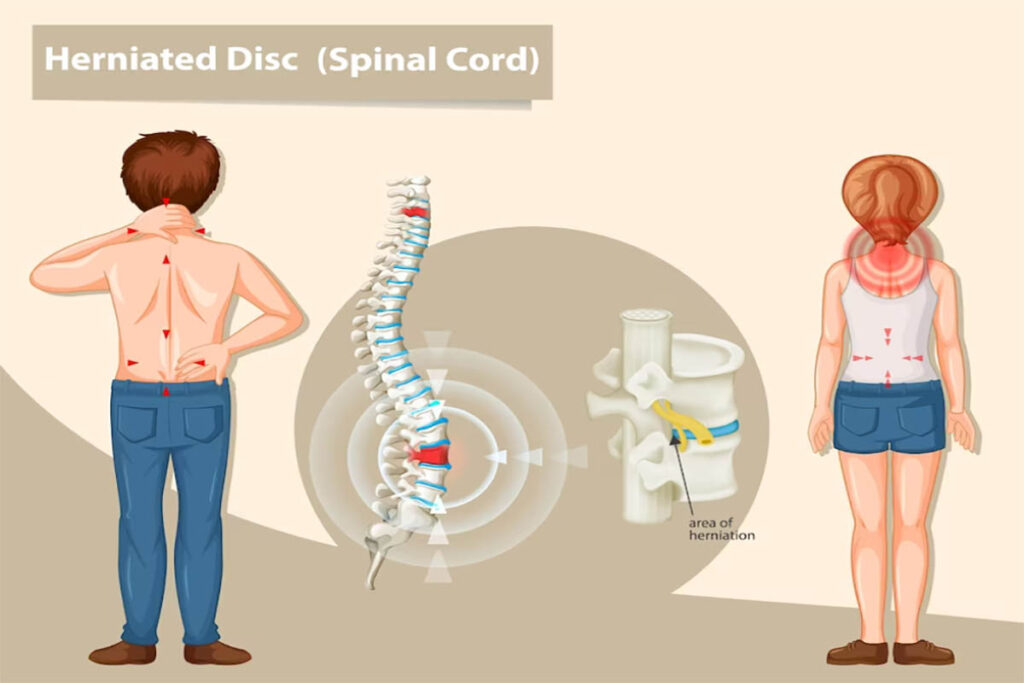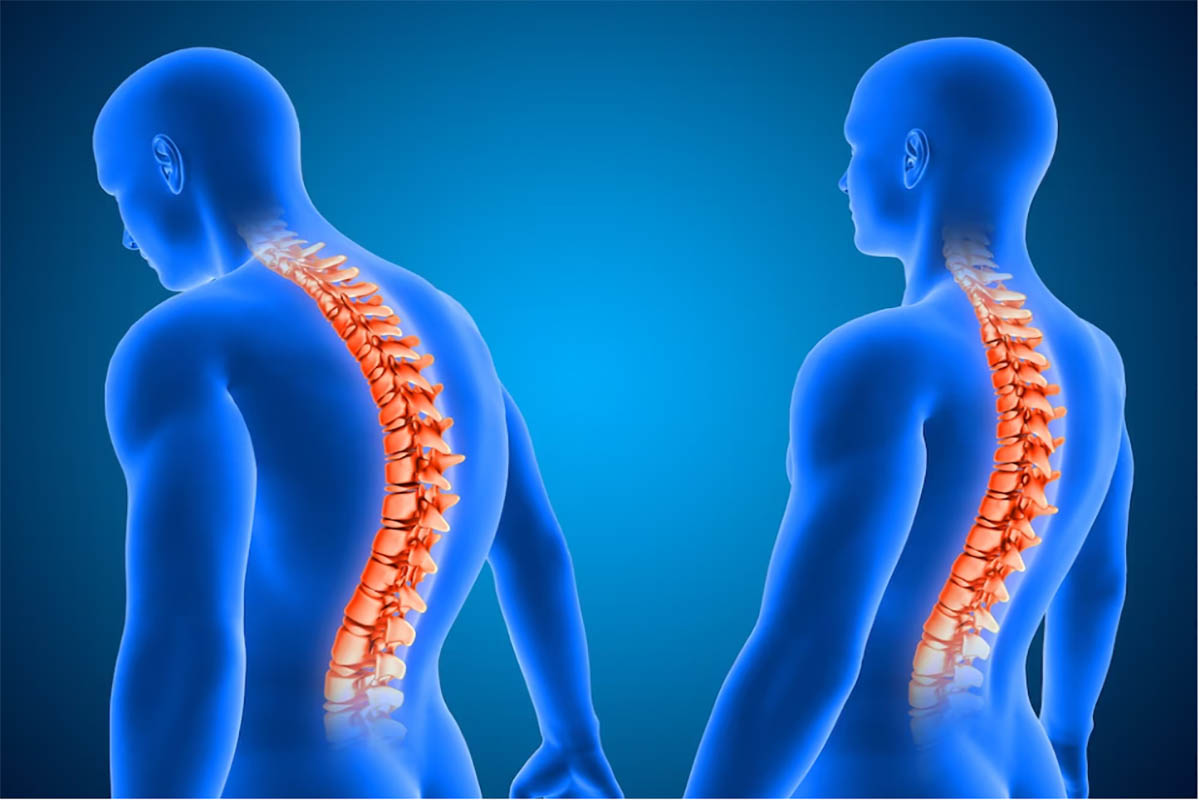Introduction
The lower back, also known as the lumbar region, is a critical part of the human body that provides stability, support, and mobility. Composed of several interconnected structures, the lower back plays a vital role in everyday activities, including walking, bending, and lifting. In this comprehensive article, we will explore the anatomy of the lower back, its various components, functions, and common conditions that can affect this essential region of the spine.
Section 1: Overview of the Lower Back Anatomy
The lower back is situated between the ribcage and the pelvis, forming the lumbar spine. It consists of five vertebrae, labeled L1 to L5, and is responsible for supporting the majority of the body’s weight. The lumbar vertebrae gradually increase in size from L1 to L5, reflecting the increased stress they endure due to the weight-bearing nature of the lower back.
Section 2: Lumbar Vertebrae Structure
Each lumbar vertebra possesses unique features that contribute to the overall structure of the lower back:
- Body (Centrum): The large, cylindrical anterior portion of each lumbar vertebra, designed to bear and distribute weight.
- Vertebral Arch: A bony ring extending posteriorly from the body, surrounding and protecting the spinal cord.
- Lamina: Flat, plate-like structures that form the posterior portion of the vertebral arch.
- Spinous Process: The bony projection that extends posteriorly from the junction of the two laminae.
- Transverse Processes: Bony projections that extend laterally from each side of the vertebra, providing attachment points for muscles and ligaments.
- Facet Joints: Paired joints that connect the lumbar vertebrae, facilitating movement and stability.
Section 3: Intervertebral Discs and Spinal Ligaments
Between each lumbar vertebra lies an intervertebral disc, acting as a shock absorber and allowing for flexibility in the lower back. These discs consist of a tough outer layer called the annulus fibrosus and a gel-like inner core called the nucleus pulposus. The intervertebral discs not only provide cushioning but also help maintain the spacing between adjacent vertebrae, preventing compression of the spinal nerves.
Additionally, several ligaments provide stability and support to the lumbar spine:
- Anterior Longitudinal Ligament (ALL): Located on the anterior surface of the vertebral bodies, the ALL limits excessive extension (backward bending) of the spine.
- Posterior Longitudinal Ligament (PLL): Positioned on the posterior aspect of the vertebral bodies, the PLL restricts excessive flexion (forward bending) of the spine.
- Ligamentum Flavum: A yellowish ligament connecting the laminae of adjacent vertebrae, supporting the spinal column and assisting in returning the spine to its neutral position after flexion.
- Supraspinous Ligament: Extending along the tips of the spinous processes, the supraspinous ligament provides additional stability to the lumbar spine.
Section 4: Muscles of the Lower Back

The lower back is supported by a complex network of muscles that play a crucial role in spinal movement and stability:
- Erector Spinae: A group of three muscles – iliocostalis, longissimus, and spinalis – located on either side of the spinal column, responsible for extending and straightening the back.
- Multifidus: A series of small muscles that run along the vertebral column, providing stability and contributing to spinal extension, rotation, and lateral bending.
- Quadratus Lumborum: Situated on both sides of the lumbar spine, the quadratus lumborum helps in lateral flexion of the spine and aids in stabilizing the lower back during lifting.
- Psoas Major: One of the primary hip flexors, the psoas major muscle also assists in stabilizing the lumbar spine during movements like walking and standing.
Section 5: Functions of the Lower Back
The lower back plays a fundamental role in various movements and functions of the body:
- Weight Bearing: The lumbar spine bears a significant portion of the body’s weight, maintaining an upright posture and providing stability during activities.
- Spinal Flexion and Extension: The lower back allows for forward bending (flexion) and backward bending (extension) of the spine.
- Lateral Bending: The lumbar spine permits side-to-side bending or lateral flexion.
- Rotation: The lower back also enables rotational movements of the spine.
Section 6: Common Lower Back Conditions and Injuries
The complexity and workload of the lower back make it prone to various conditions and injuries, including:
- Low Back Pain: One of the most prevalent musculoskeletal complaints, low back pain can result from muscle strains, ligament sprains, or disc-related issues.
- Herniated Disc (Slipped Disc): The rupture or bulging of an intervertebral disc can lead to nerve compression, causing pain and sometimes radiating symptoms into the legs (sciatica).
- Degenerative Disc Disease: As the intervertebral discs wear down over time, they may lose their cushioning properties, leading to pain and reduced flexibility.
- Lumbar Spinal Stenosis: A narrowing of the spinal canal, causing compression of the spinal cord or nerves, often resulting in pain and weakness.
- Spondylolisthesis: A condition where one vertebra slips forward over the adjacent one, potentially causing nerve compression and pain.
- Lumbar Strain: Overstretching or tearing of muscles or ligaments in the lower back due to sudden movements or heavy lifting.
- Sciatica: Compression or irritation of the sciatic nerve, causing radiating pain, tingling, or numbness down the leg.
Section 7: Diagnosis and Treatment of Lower Back Conditions
Diagnosing lower back conditions involves a thorough medical history, physical examination, and sometimes imaging studies such as X-rays, MRI, or CT scans. Treatment options for lower back conditions depend on the specific diagnosis but may include:
- Rest and Activity Modification: Temporary rest and avoiding activities that exacerbate symptoms can help the healing process.
- Physical Therapy: Specific exercises and stretches can improve lower back strength and flexibility, enhancing overall spine health.
- Pain Management: Over-the-counter pain relievers or prescription medications may be used to manage pain and inflammation.
- Heat and Cold Therapy: Applying heat or cold packs can provide pain relief and reduce inflammation.
- Injections: Epidural steroid injections can target the affected area and provide short-term pain relief for certain conditions.
- Chiropractic Care: Manual adjustments by a chiropractor can help realign the spine and alleviate pain.
- Surgical Interventions: In severe cases or when conservative treatments fail, surgical procedures such as discectomy, laminectomy, or spinal fusion may be considered.
Section 8: Preventive Measures and Lifestyle Recommendations
To maintain a healthy lower back and prevent potential issues, individuals can follow these preventive measures:
- Maintain Proper Posture: Maintain good posture while sitting, standing, and lifting to reduce stress on the lower back.
- Regular Exercise: Engage in regular physical activity, including strengthening exercises, to support the muscles surrounding the lumbar spine.
Regularly squat, walk, and lunge. It is important to maintain functional activity tolerance to allow for efficient force tolerance in joints and muscles.
Maintain mobility, strength, and motor control via regular exercise at home or at the gym.
Eat well with lots of water, fruits, and vegetables!



